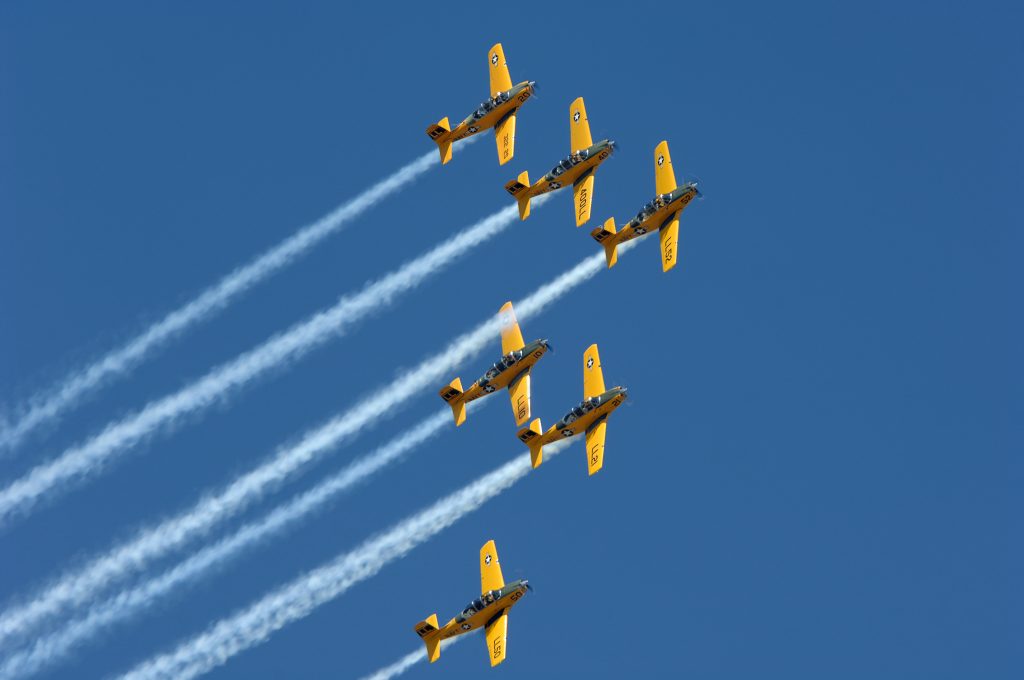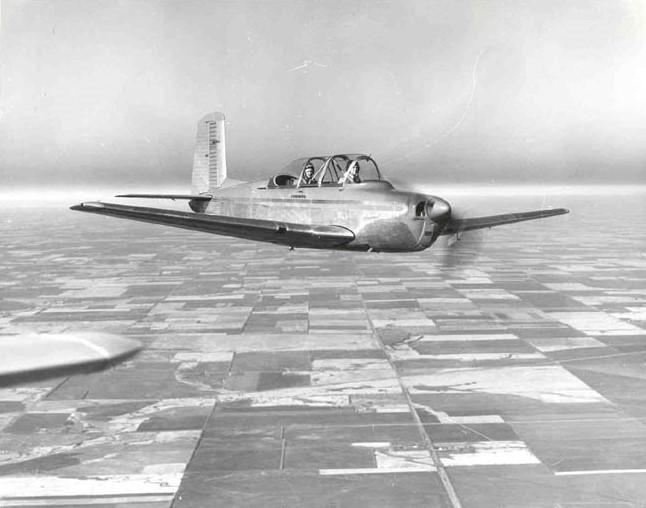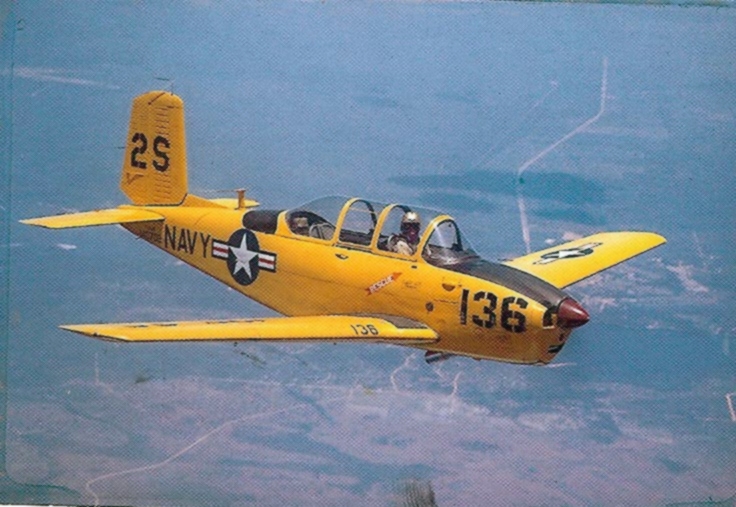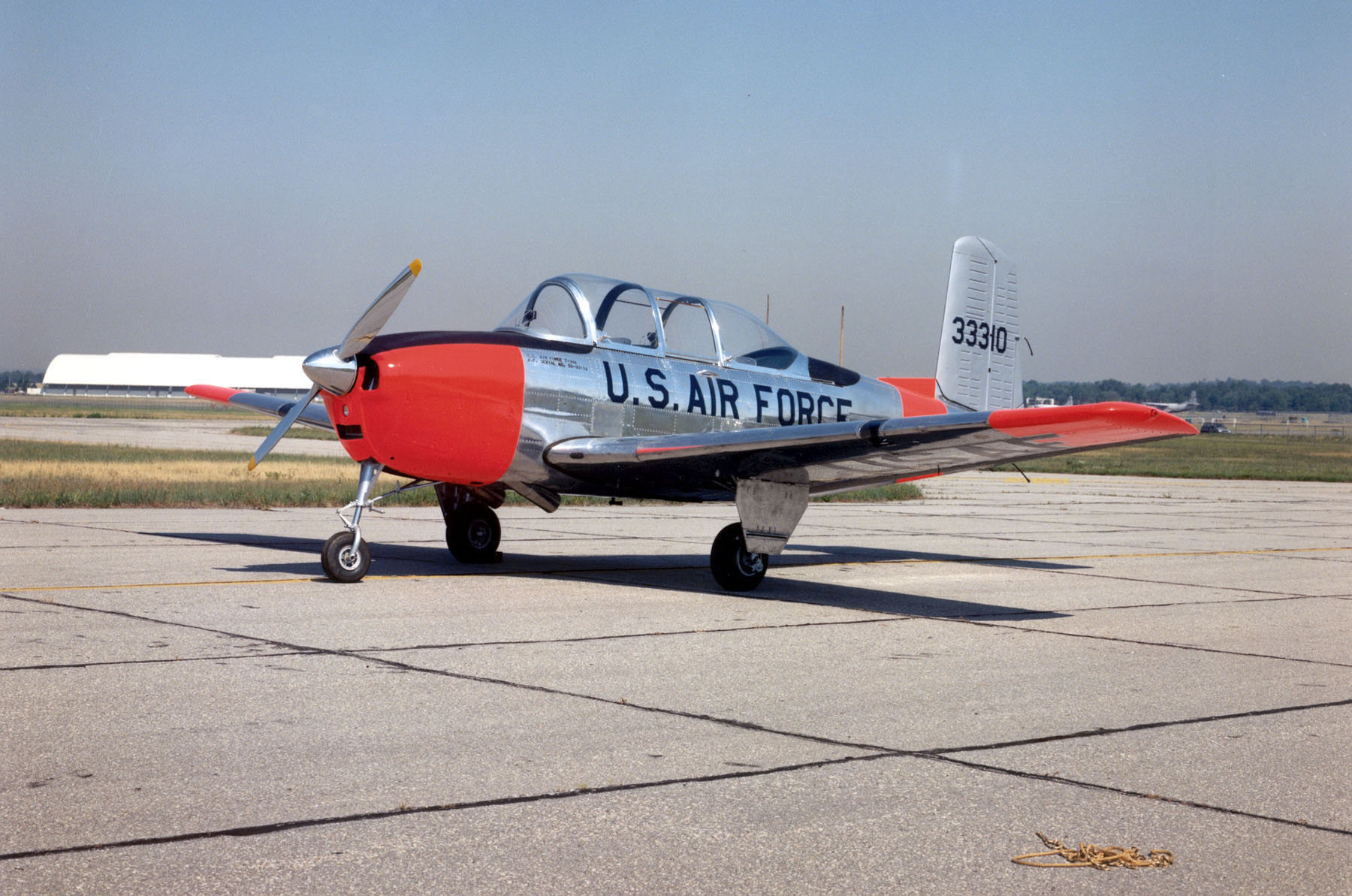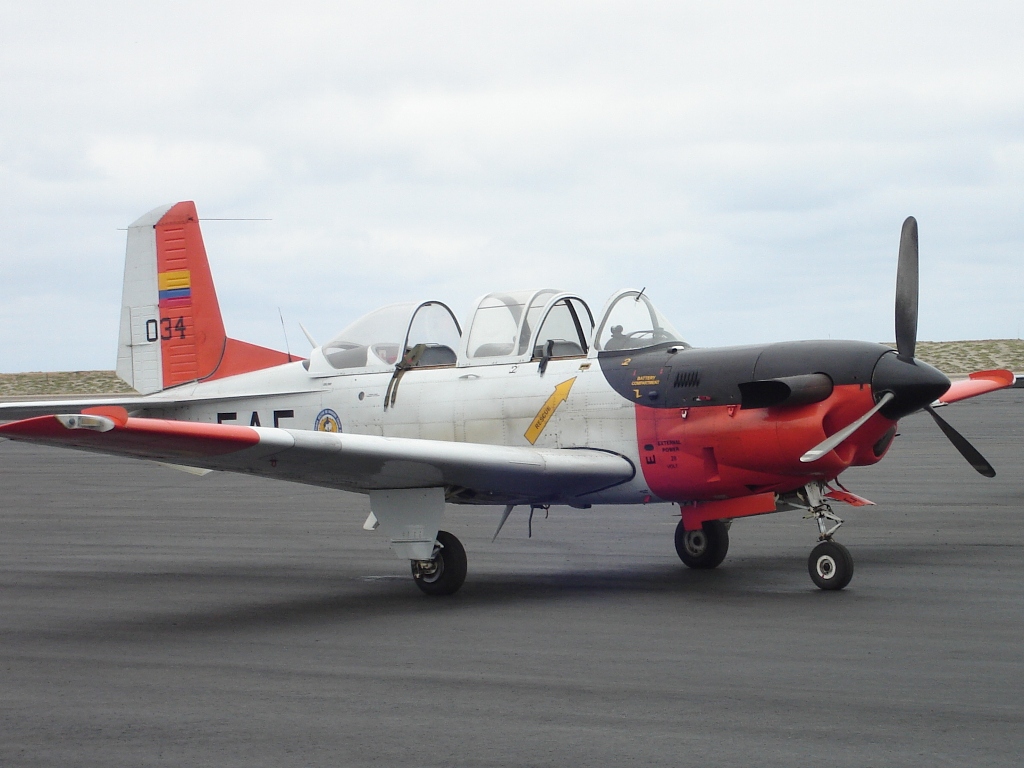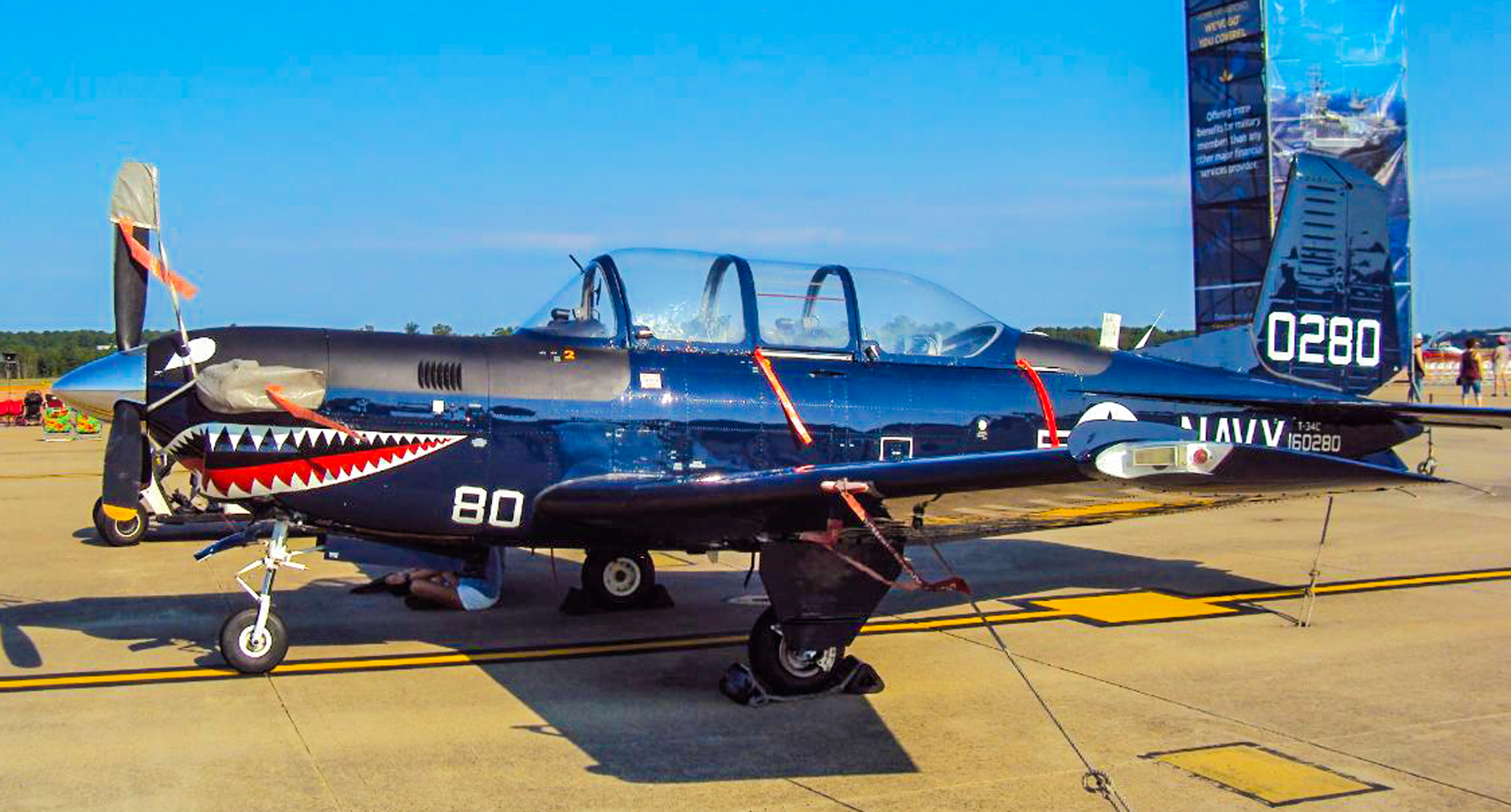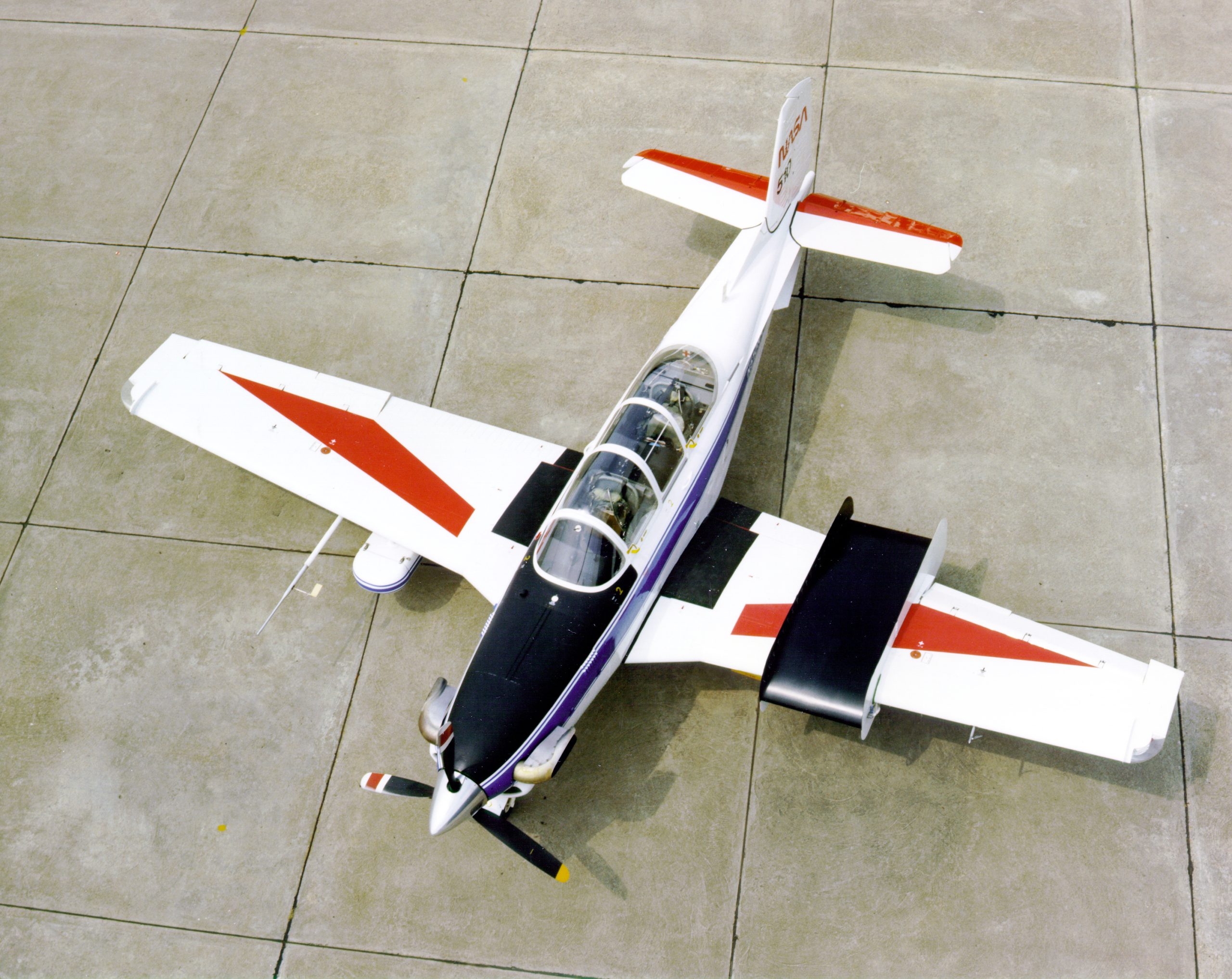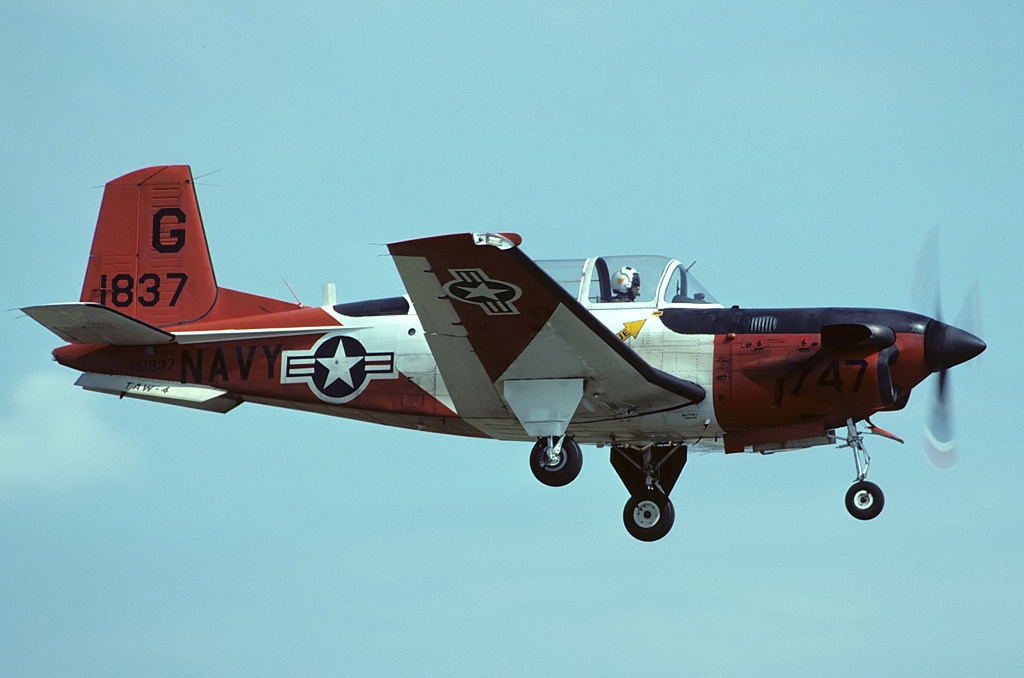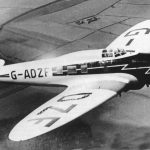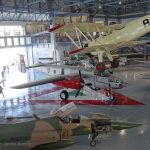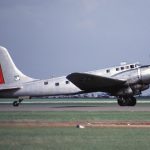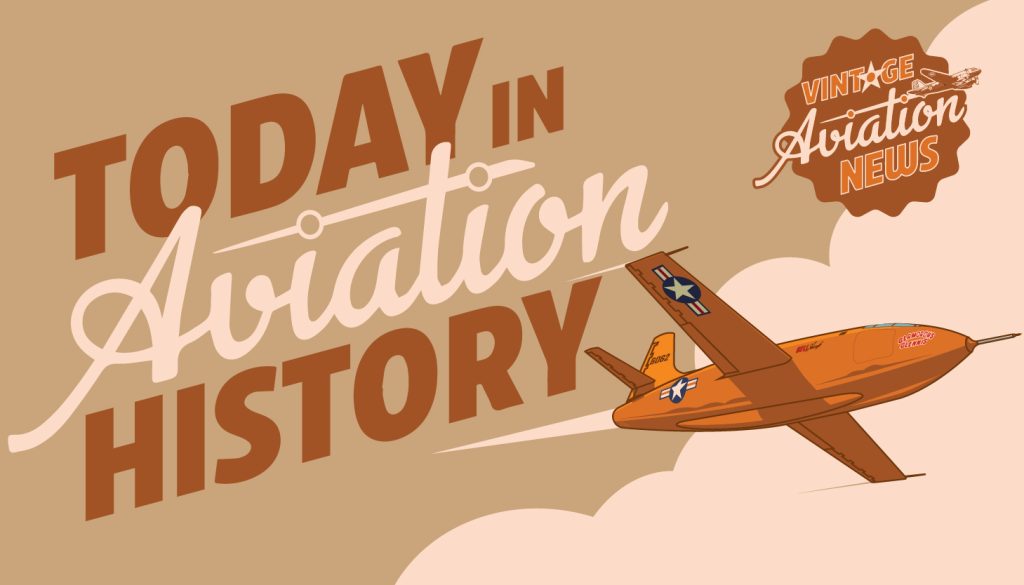 On December 2, 1948, the prototype of a new military trainer made its first flight over the plains of Wichita, Kansas. This was the Beechcraft Model 45, an aircraft that would become known as the T-34 Mentor, which even 76 years later, remains in use today, and is a prominent feature on the warbird circuit. In tracing the origin of the Beechcraft T-34 Mentor, one must go back to the development of one of the company’s most successful civilian designs, the Model 35 Bonanza, which first flew on December 22, 1945, being piloted by Beech Aircraft’s chief test pilot, Vern Louis Carstens, and by 1947, the type hit the civil market for general aviation. As the Bonanza came onto the American aviation scene, the company’s founder, Walter Beech, was envisioning a new military trainer. Shortly after WWII, the U.S. military began downsizing its vast array of trainers built for WWII, but Beechcraft founder Walter Beech foresaw the need for a new military trainer to replace the WWII-era trainers still in service, such as the Boeing-Stearman Model 75 biplane primary trainer and the North American AT-6/SNJ Texan advanced trainer. For the being, however, the proposal would be a private venture, with Beechcraft hoping to attract the new Department of Defense’s attention with a working prototype.
On December 2, 1948, the prototype of a new military trainer made its first flight over the plains of Wichita, Kansas. This was the Beechcraft Model 45, an aircraft that would become known as the T-34 Mentor, which even 76 years later, remains in use today, and is a prominent feature on the warbird circuit. In tracing the origin of the Beechcraft T-34 Mentor, one must go back to the development of one of the company’s most successful civilian designs, the Model 35 Bonanza, which first flew on December 22, 1945, being piloted by Beech Aircraft’s chief test pilot, Vern Louis Carstens, and by 1947, the type hit the civil market for general aviation. As the Bonanza came onto the American aviation scene, the company’s founder, Walter Beech, was envisioning a new military trainer. Shortly after WWII, the U.S. military began downsizing its vast array of trainers built for WWII, but Beechcraft founder Walter Beech foresaw the need for a new military trainer to replace the WWII-era trainers still in service, such as the Boeing-Stearman Model 75 biplane primary trainer and the North American AT-6/SNJ Texan advanced trainer. For the being, however, the proposal would be a private venture, with Beechcraft hoping to attract the new Department of Defense’s attention with a working prototype.
Using the new Bonanza as a basis for this design, there was some talk of adding the Bonanza’s V-tail on the aircraft before that was abandoned in favor of a more conventional vertical and horizontal stabilizer design. The result was the Model 45, the aircraft that would become the T-34 Mentor. After its first flight in 1948, with Vern Carstens once again at the controls, the aircraft would compete against two other designs: the Fairchild XNQ (designated by the USAF as the T-31) and the Temco T-35 Buckaroo. Three pre-production prototypes were produced (serial numbers 50-735, -736, and -737) were flown off against the XNQ/T-31 and the T-35, but in the end, the T-34’s performance was deemed to be the best and while the XNQ/T-31 would only see two examples produced, and the T-35 would see 26 examples produced with ten of these being exported to Saudi Arabia, the T-34 Mentor was accepted into the US armed forces in 1953, with the Air Force flying the T-34A, and the Navy and Marines flying the T-34B.
Besides its career in the US military, the Beechcraft T-34 Mentor would find success in the export market, where its reliability, ease of maintenance, and good handling characteristics were used to train pilots from Bolivia to Indonesia, from France to Japan, and from Argentina to Taiwan. In fact, the design was produced under license around the world as well, with Japan even developing the Fuji KM-2 as a primary trainer for their Self-Defense Forces. In the United States, the U.S. Air Force would eventually phase out their T-34As in favor of two designs from Beech’s rival Cessna in the form of the T-41 Mescalero (a military version of the Cessna 172) and the jet-powered T-37 Tweet, though the Civil Air Patrol would retain their T-34s until 2003.
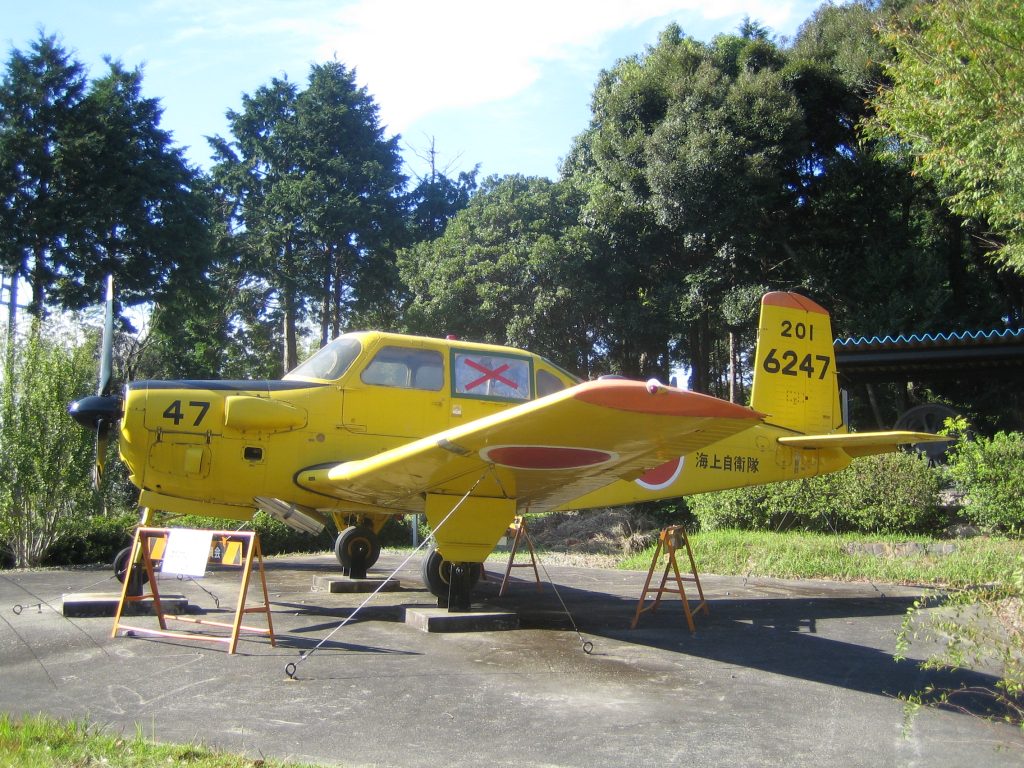
Beechcraft would also introduce upgraded versions of the Mentor in order to keep it current. One of the first of these was the Model 73 Jet Mentor. Introduced in 1955, the Jet Mentor would reuse much of the original piston-engine Mentor in its design, with the most major changes including the cockpit being shifted forward into the fuselage, the installation of a single centrally mounted Continental J69 turbojet engine with air intakes added in the wing roots. However, the Jet Mentor was rejected by the USAF in favor of the Cessna T-37 Tweet, and by the US Navy in favor of the Temco TT Pinto, which was later phased out in favor of the continued use of its pre-existing piston engine trainers; T-35B Mentor and the North American T-28 Trojan. Only one Model 73 Jet Mentor was ever built, and it is now part of the collections of the Kansas Aviation Museum in Wichita.
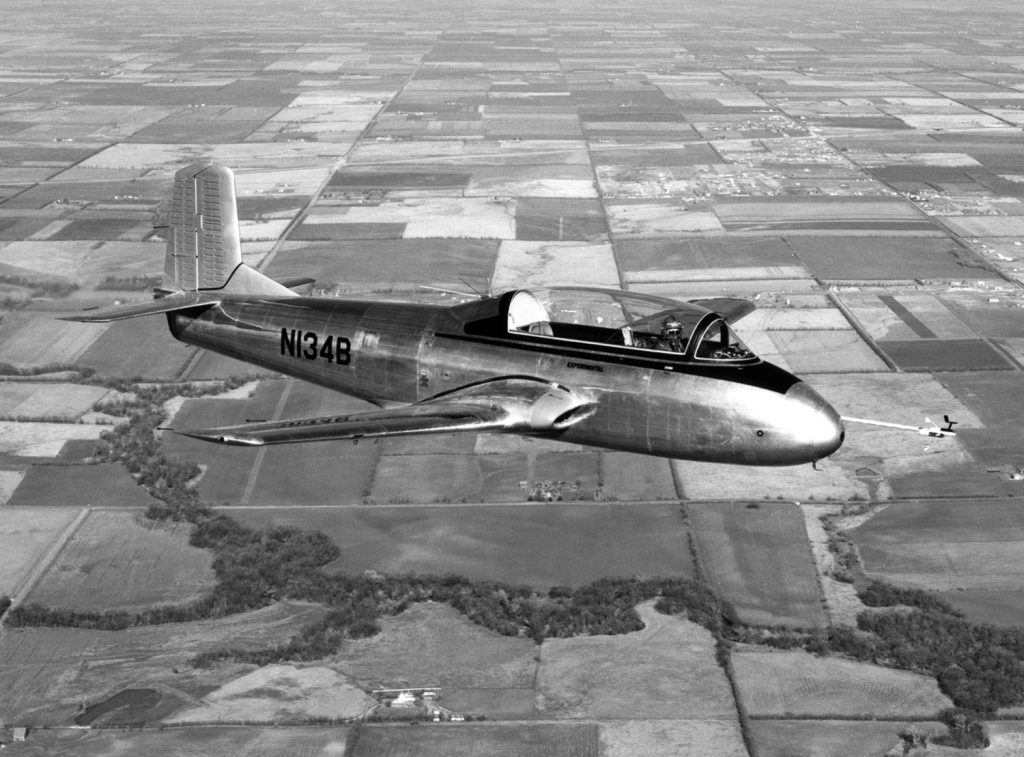
A more successful adaptation of the T-34 Mentor would prove to be the T-34C Mentor, which replaced its Continental O-470 horizontally opposed six-cylinder engine for a Pratt & Whitney Canada PT6 turboprop engine. While the original production line for the T-34 Mentor had run from 1953 to 1959, the production of the T-34C Turbo Mentor would commence in 1975 and run until 1990. The US Navy, Marines, and Coast Guard would phase out the T-34B in favor of the T-34C, which would remain in service until the adoption of another creation of Beechcraft’s the T-6 Texan II, though the Turbo Mentor remains in use with some US Navy squadrons as an aerial spotter. Several Naval Air Stations also continued using T-34Bs at their flying clubs for active-duty personnel to hone their skills in piloting, navigation, and other applications of aerial science.
Today, many T-34 Mentors that have been sold as surplus have become warbirds, many of which are currently used by private pilots and organizations such as the Commemorative Air Force in airshows, aerobatics, giving rides, and for flyovers at holidays such as Memorial Day and Veterans Day. Others are now static displays at museums such as the National Museum of the United States Air Force and the National Naval Aviation Museum and are loaned by these two large museums to regional ones across the country. But it truly is remarkable that 76 years from that December day in Wichita back in 1948, the Beechcraft T-34 Mentor is still flying, a feat that its designers and test pilots could scarcely imagine.
Today in Aviation History is a series highlighting the achievements, innovations, and milestones that have shaped the skies. All the previous anniversaries are available HERE